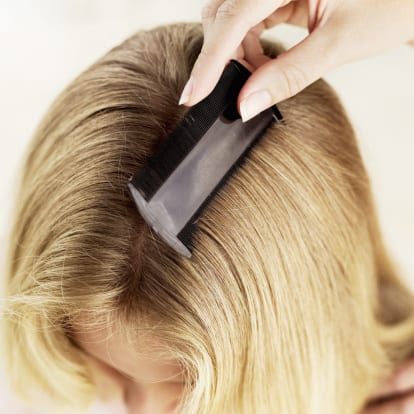Head lice is a common condition that most people will encounter at some point in their life. Lice infestations are most common in childhood as children tend to have close contact with their peers during playtime that can lead to head lice being passed from one child to the other in a classroom or daycare.
If you have found head lice on your child, then you are most likely feeling anxious and overwhelmed at the task ahead of you. Fortunately, you can relax as the following guide has been prepared to help you treat head lice so that they will be completely eliminated and unlikely to return.
Check the Head for Lice
The first step to treating head lice is to make sure that an infestation has occurred. Although you may have noticed signs, such as your child scratching their head, you will need to positively identify a live louse or egg in order to be certain that there is a case of head lice. Most doctors and nurses are willing to help out with this step. However, lice can easily be identified by looking for small insects that move away from the light when the person’s hair is parted. It can sometimes be easier to find the lice eggs, or nits, which tend to range from white to brown in color and are attached to individual strands of hair. Unlike dandruff, they will not move when brushed or flicked with a finger.
Gather Your Supplies
Treating head lice is a time-consuming process that requires several important supplies. First, you will need fine-toothed combs, your preferred treatment, and some tissues or paper towels. If you are treating someone else who has lice, such as your child, then you will want to protect yourself from lice by tucking your hair into a shower cap and putting on gloves. It is also important to remember to cover any surfaces where you will be working with paper towels or newspaper so that you can easily throw away dropped nits and lice.
Provide a Distraction
If you are treating a child’s hair, then it may be difficult for them to sit through a treatment session. Combing out the nits can take some time. Therefore, you will want to be prepared to help the child to remain seated by providing a distraction. This can be a great time to turn on their favorite movie or television show that they can watch while you comb out their hair.
Apply the Lice Treatment
There are several different types of treatments that can be used to eliminate lice. Each of them has their own advantages and varying levels of effectiveness. Many parents rely on insecticidal medications that can be purchased over-the-counter at pharmacies or with a doctor’s prescription. These will often be applied to dry hair, and then allowed to sit for a specific amount of time. Some common home-remedies include applying mayonnaise, tea tree oil, and other types of oils that are believed to smother the lice. These are also applied to the hair and left on for several hours before washing. Whichever method you choose, you will want to make sure to reach every surface of a child’s hair and scalp.
Comb Out the Nits
Although it is a tedious process, it is essential to ensure that every single egg is removed so that they will not hatch and cause an infestation. Some parents have found that breaking up the combing process into several sessions is easier for a child to handle. For this step, you will need to use a special fine-toothed comb over each strand of hair in order to ensure that they nits are removed. It can be helpful to use a flashlight or take the child out in the sun to be able to spot hard-to-find eggs.
Once the head lice have been eliminated, it will be necessary to continue checking the hair in order to quickly identify a re-occurrence. Children should also be taught prevention methods such as avoiding shared hairbrushes, hats, and jackets. Finally, know that it may take a second application of a treatment before you find success. However, taking your time and making sure to remove the nits is the best way to completely eliminate head lice while preventing a re-occurrence.





